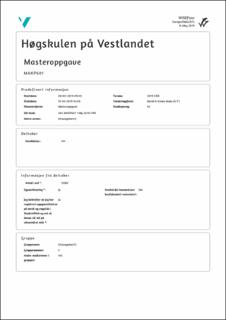| dc.description.abstract | This master thesis includes an extended introduction section and a review article. The article will be submitted for acceptance in BMC Psychiatry. The protocol was registered in PROSPERO, 1st of March 2018 (CRD42018088513)
BACKGROUND: Anxiety is a common mental disorder, that untreated is associated with poor prognosis. There are need for effective, accessible, and acceptable treatments considering that 80% of children and adolescents suffering from anxiety go untreated.
OBJECTIVE: The objective is to determine the effects of physical activity as treatment for children and adolescents under 18 years suffering from anxiety disorder or anxiety symptoms compared to any control.
METHOD: Systematic searches were conducted in Medline, EMBASE, PsycInfo, Amed, SPORTDiscus,CINAHL, ERIC, and CENTRAL in June 2018, supplemented by citation search, reference screening, and searches in WHO trial register, ClinicalTrial.gov, Open Grey and Google Scholar. Relevant randomized controlled trials (RCT), non-randomized controlled clinical trials (NRS), controlled before-after studies and interrupted time series with control group, assessing physical activity interventions for children 0-17,99 years with anxiety. Study selection, data extraction, and assessment of methodological quality were conducted by both authors independently. Methodological quality in included studies was assessed using
Cochrane Collaboration Risk of Bias Tools for RCT (RoB2) and for NRS (ROBINS-I).
Overall quality of evidence was rated using GRADE. Meta-analysis was performed using RevMan. The review follows the PRISMA statement.
MAIN RESULT: Meta-analyse in this review revealed a large, positive effect size in reducing anxiety symptoms (-1,08, P=0,0008). For quality of life the result was promising (6,31, P=0,230). Low certainty (GRADE) of overall evidence.
AUTHORS CONCLUSION: Physical activity may have a positive effect in reducing anxiety in children and adolescents. However, the results must be considered with great caution due to the low certainty of the overall evidence. More comprehensive and thorough studies are needed on the issue | en_US |

